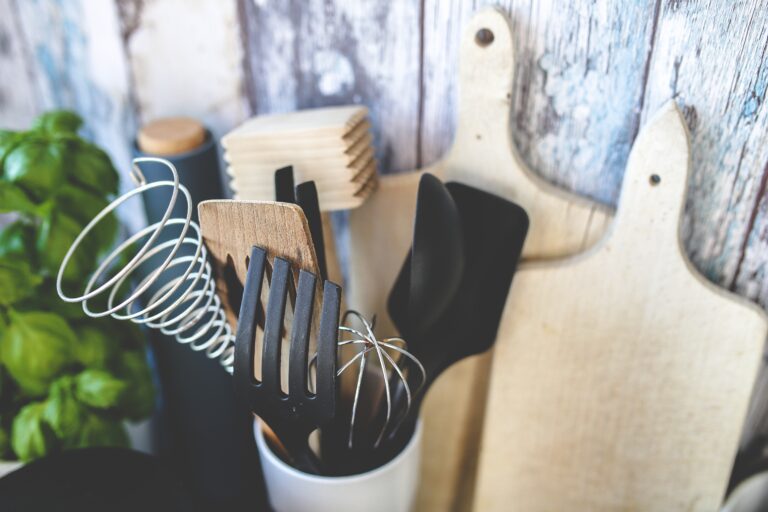Silicone, stainless steel, wood… Discover the best (and healthiest) kitchen utensils
Wooden, clay, steel, glass… From the forbidden copper to the modern silicone. The history of our stoves is extensive and we have been acquiring and discarding all kinds of materials for the manufacture of our kitchenware.
Here we tell you which are the best materials for cooking:
Wood: the usual
Wood is a porous material that can seep moisture and cause bacteria to grow, which has earned it a reputation for being unhygienic, but depending on what utensil and what you use it for, it can be a very appropriate material. Spoons (for example) protect our pans and have a lower risk of generating these bacteria.
For domestic use, we suggest bamboo, which is prepared to withstand high temperatures and is very resistant.
Glass: clean and stable
Who hasn’t baked (or microwaved) macaroni in the typical glass tupperware?
It is ideal for the oven because it withstands very high temperatures. It is a clean material that does not transfer flavors or other elements of its composition to the food, which makes it one of the healthiest materials for cooking.
Stainless steel: harder than steel
Every professional kitchen is (or should be) covered with stainless steel. Work tables, cold rooms, baking plates…
Stainless steel is one of the most heat-stable materials and more resistant to shocks and falls, which makes it practically eternal. In addition, it is easy to clean, just hot water and a little detergent. However, do not go near a frying pan because steel utensils irreversibly scratch Teflon.
Silicone: the jewel in the crown
It is the ideal material. It is of natural origin and has many hygienic qualities, making it ideal for domestic and professional use.
Among its many advantages:
- Non-porous
- It is comfortably flexible (remember that cake pan that unmolds so easily).
- Non-adherent, less soiling and better cleaning.
- And it doesn’t burn! A few seconds after being in contact with a heat source, the silicone cools down and we can touch it without risk of burns. Perfect if you have children at home.
Cast iron: those pots that weigh so much
Cast iron pots and pans have taken over our homes in recent years. They come in many colors and sizes, so it is easy to see them in mini format to put tapas or individual portions.
It is a good material because it does not contain glazes, which avoids the risk of transferring harmful elements to the food.
And finally, the mud
They are very popular because they transmit heat slowly. They like them because they transmit heat little by little, but make sure that they are not enameled because the varnish could contain heavy metals that can pass into the food.
In this post we have summarized the most used materials in kitchen utensils, choosing the one that best suits your needs is up to you.
We will (always) recommend that you choose trusted brands with EU Quality Certification, which accredit the quality and origin of the materials, such as those we distribute at Yelow.
Take a look at our catalog, you will surely find what you need. And if you have any doubts, contact us without obligation.

